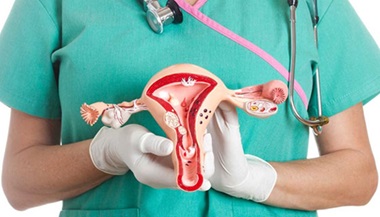Loop Electrosurgical Excision Procedure (LEEP)
What is a loop electrosurgical excision procedure (LEEP)?
Loop electrosurgical excision procedure (LEEP) uses a wire loop heated by electric current to remove cells and tissue in a woman’s lower genital tract. It is used as part of the diagnosis and treatment for abnormal or cancerous conditions.
The lower genital tract includes the cervix and vagina. The cervix is the lower, narrow part of the uterus and the vagina connects the cervix and the vulva.
With LEEP, an electric current passes through the fine wire loop to cut away a thin layer of abnormal tissue. This tissue will be sent to the lab for testing. LEEP can also remove abnormal cells to allow healthy tissue to grow.
Why might I need a LEEP?
LEEP may be done when cervical or vaginal problems are found during a pelvic exam, or abnormal cells are found during a Pap test. LEEP is also done to detect cancer of the cervix or vagina.
Cells that appear to be abnormal, but are not yet cancerous, may be called precancerous. These abnormal cells may be the first evidence of cancer that could develop years later.
LEEP may also be used to assist in the diagnosis or treatment of the following conditions:
- Polyps (benign growths)
- Genital warts, which may indicate infection with human papilloma virus (HPV), a risk factor for developing cervical cancer
- Diethylstilbestrol (DES) exposure in women whose mothers took DES during pregnancy, as DES exposure increases the risk for cancer of the reproductive system
Your healthcare provider may have other reasons to recommend LEEP.
What are the risks for a LEEP?
Some possible complications may include:
- Infection
- Bleeding
- Changes or scarring in the cervix from removal of tissue
- Trouble getting pregnant
- Potential for preterm birth or having a low birth weight baby
If you are allergic to or sensitive to medications, iodine, or latex, tell your healthcare provider.
If you are pregnant or think you could be, tell your healthcare provider.
There may be other risks depending on your condition. Be sure to discuss any concerns with your healthcare provider before the procedure.
Certain factors or conditions may interfere with LEEP. These factors include:
- Menstruation
- Acute pelvic inflammatory disease
- Acute inflammation of the cervix
How do I get ready for LEEP?
- Your healthcare provider will explain the procedure and you can ask questions.
- You will be asked to sign a consent form that gives your permission to do the procedure. Read the form carefully and ask questions if something is not clear.
- Generally, no preparation, such as fasting or sedation, is needed.
- If you are pregnant or think you may be, tell your healthcare provider.
- Tell your healthcare provider if you are sensitive to or are allergic to any medicines, latex, tape, iodine, and anesthesia.
- Tell your healthcare provider of all medicines (prescribed and over-the-counter) and herbal supplements that you are taking.
- Tell your healthcare provider if you have a history of bleeding disorders or if you are taking any blood-thinning medicines (anticoagulants), aspirin, or other medicines that affect blood clotting. You may be told to stop these medicines before the procedure.
- Your healthcare provider will tell you not to use tampons, vaginal creams or medicine, douching, or having sex before the procedure.
- LEEP is usually done when you are not having your menstrual period.
- Your healthcare provider may recommend that you take a pain reliever 30 minutes before the procedure.
- You may want to bring a sanitary napkin to wear home after the procedure.
- Follow any other instructions your provider gives you to get ready.
What happens during a LEEP?
LEEP may be done in a healthcare provider’s office, on an outpatient basis, or as part of your stay in a hospital. Procedures may vary depending on your condition and your healthcare provider’s practices.
Generally, LEEP follows this process:
- You will be asked to undress completely or from the waist down and put on a hospital gown.
- You will be instructed to empty your bladder before the procedure.
- You will lie on an exam table, with your feet and legs supported as for a pelvic exam.
- Your healthcare provider will insert an instrument called a speculum into your vagina to spread the walls of the vagina apart to expose the cervix.
- Often, the healthcare provider will use a colposcope, an instrument with a special lens similar to a microscope, to magnify the tissues. The colposcope will be placed at the opening of your vagina but does not enter your vagina.
- Your healthcare provider will look through the colposcope to locate any areas for treatment on the cervix or in the vagina. Photographs with the colposcope or sketches of the areas on your cervix may be made for your healthcare record.
- Your cervix may be cleaned and soaked with a vinegar solution, also called acetic acid solution. This helps make the abnormal tissues turn white and become more visible. You may feel a mild burning sensation. An iodine solution is sometimes used to coat the cervix, called the Schiller test.
- The healthcare provider will numb the area using a small needle to inject medicine.
- A type of forceps, called a tenaculum, may be used to hold the cervix steady for the procedure. You may feel some cramping when the tenaculum is applied.
- You will hear humming and/or blowing sounds from the equipment.
- The LEEP wire will be inserted through the speculum and passed through the abnormal tissues. One or more passes may be needed. You may feel pressure or a slight cramping.
- Some women feel faint during the procedure. Tell your healthcare provider or the nurse if you have this feeling.
- It is very important that you lie still during the procedure.
- The amount and location of tissue removed depends on the whether LEEP is being used as a diagnostic tool, or to remove abnormal tissue. LEEP wires come in different sizes and shapes.
- The electrical current will seal the blood vessels, so usually there is very little bleeding. Any bleeding from the LEEP site may be treated with a paste-like topical medicine.
- The tissue will be sent to a lab for further testing.
What happens after a LEEP?
After LEEP, you may rest for a few minutes after the procedure before going home.
You may want to wear a sanitary pad for bleeding. It is normal to have some mild cramping, spotting, and dark or black-colored discharge for several days. The dark discharge is from the medicine applied to your cervix to control bleeding.
You may be instructed not to douche, use tampons, or have sex for 4 weeks after LEEP, or for a period of time recommended by your healthcare provider.
You may also have other limits on your activity, including no strenuous activity or heavy lifting.
Take a pain reliever for cramping or soreness as directed by your healthcare provider. Aspirin or certain other pain medicines may increase the chance of bleeding. Be sure to take only recommended medicines.
Your healthcare provider will tell you when to return for further treatment or care. Generally, women who have had LEEP will need more frequent Pap tests.
Tell your healthcare provider if you have any of the following:
- Bleeding with clots
- Foul-smelling drainage from your vagina
- Fever and/or chills
- Severe abdominal pain
Your healthcare provider may give you other instructions after the procedure, depending on your particular situation.
Fertility and Pregnancy After a LEEP

If you plan to conceive after a loop electrosurgical excision procedure (LEEP), you might be worried about how it will affect your fertility and pregnancy. Learn the facts from a Gyn/Ob.
Next steps
Before you agree to the test or the procedure make sure you know:
- The name of the test or procedure
- The reason you are having the test or procedure
- What results to expect and what they mean
- The risks and benefits of the test or procedure
- What the possible side effects or complications are
- When and where you are to have the test or procedure
- Who will do the test or procedure and what that person’s qualifications are
- What would happen if you did not have the test or procedure
- Any alternative tests or procedures to think about
- When and how will you get the results
- Who to call after the test or procedure if you have questions or problems
- How much will you have to pay for the test or procedure






